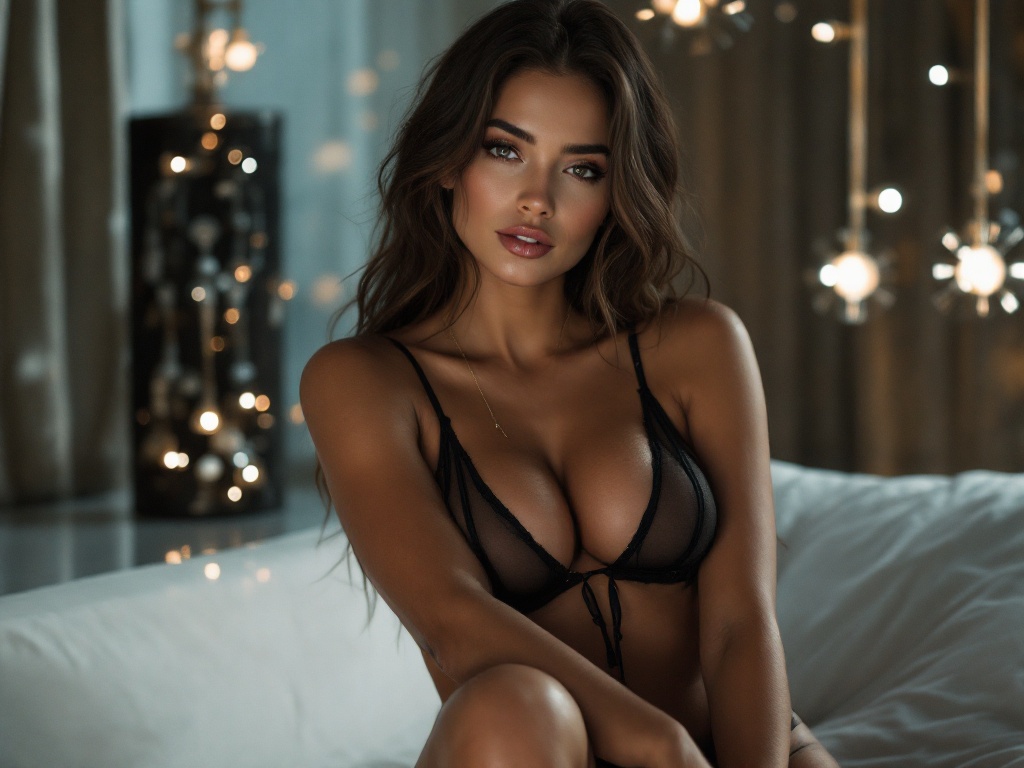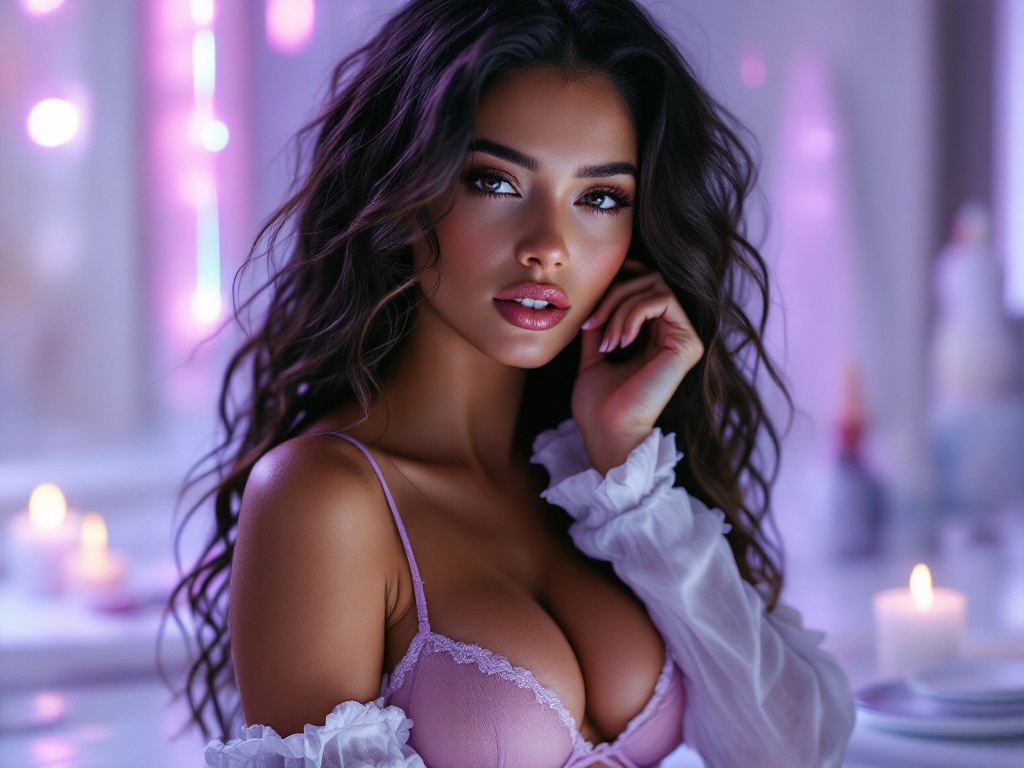The confluence of technology and human imagination has birthed an exciting new artistic avenue: AI-generated erotic visuals. This trend prompts both enthusiasm and critical examination of how our conceptions of gender and sexuality are continually reshaped in the digital era. As artificial intelligence increasingly governs the creation of visual content, the complexities of gender representation come into question. There exists a nuanced interplay between the technology itself and the cultural narratives that define our understanding of gender. In this exploration, we will investigate the diverse ways AI engages with themes of consent, artistic expression, and societal norms linked to sexuality. Ultimately, this inquiry illuminates the wider implications of harnessing AI in the realm of erotic art.
The Progression of Erotic Imagery
AI-generated erotic visuals are part of an ongoing lineage that stretches back through the annals of art and culture. Artistic expressions of sexuality have historically both mirrored societal conventions and contributed to their evolution. Presently, conventional ideas are being challenged as technology uncovers novel pathways for artistic innovation. Digital platforms have revolutionized our interactions with erotic art, facilitating effortless distribution and consumption. While this accessibility broadens the audience, it simultaneously raises the stakes concerning representation. In analyzing this evolution, it’s crucial to acknowledge the cultural forces that have shaped erotic imagery throughout history.
Historical Framework
Across the ages, erotic imagery has frequently reflected the prevailing social standards and gender dynamics. From ancient Greek ceramics depicting sexual motifs to contemporary bold representations of sexuality, art has captured the intricacies of human life. However, women and marginalized genders have often found themselves objectified within these artistic representations. This historical backdrop sets the stage to scrutinize how AI-generated creations may both replicate and overturn these enduring patterns. The importance of representation will be essential in understanding the equilibrium AI strikes between innovation and tradition.
The Impact of Technology
As digital technology advances at a blistering pace, various art forms have undergone significant transformations. AI enters this narrative not merely as a tool, but as a revolutionary force reshaping creative practices. By automating intricate tasks, it allows artists to traverse new artistic territories that were once limited by time and expertise. Yet, the ascent of AI raises questions about authenticity and authorship. This uncharted territory necessitates a reassessment of artistic value and merit in an age dominated by machine-generated visuals. Ultimately, the frontiers of creativity are being redrawn before our eyes.

Gender Representation in AI-Generated Imagery
Conversations about gender dynamics within AI-generated erotic imagery expose deeper insights into societal beliefs. The constructed nature of gender representation in these artistic forms warrants a comprehensive investigation into how we perceive ourselves and each other. Delving into the role of algorithms in crafting visual narratives unveils the biases that can surface from them. By scrutinizing datasets, we can glean valuable perspectives on how gender is understood and depicted within AI frameworks. The pressing question persists: Do these representations empower, or do they entrench existing stereotypes?
The Function of Algorithms
Algorithms serve as both unsung heroes and formidable adversaries in the landscape of AI-generated art. They analyze expansive datasets to produce imagery, but complications arise when those datasets are biased. If an algorithm primarily draws from male-centered visual paradigms, it can inadvertently uphold traditional gender stereotypes. The inherent absence of understanding in AI complicates the depiction of diversity. The challenge lies in two parts: ensuring datasets are equitable and comprehending how algorithms interpret gender in visual landscapes.
| Representation Type | Description |
|---|---|
| Objectification | Depicting individuals, typically women, as mere objects of desire. |
| Empowerment | Imagery that honors agency and individual identity. |
| Diversity | Incorporating various representations across different gender identities. |
As we scrutinize these types of representations, it is crucial to acknowledge that gender stereotypes can become deeply embedded in AI outputs. They often perpetuate traditional perspectives, showcasing how technology frequently reflects societal biases. Additionally, within AI-generated art, the portrayal of gender is in a state of constant flux, shaped by user interaction and feedback loops. This ongoing dialogue will influence the future iterations of erotic imagery.
The Effects of AI on Gender Dynamics
The influence of AI-generated erotic content on social perceptions of gender is profound. The interplay between technology and consumer demand plays a crucial part in these dynamics. As consumers increasingly engage with AI-generated imagery, shifts in preference can encourage artists and platforms to evolve their offerings. We are observing a transformation in the landscape, where established narratives are being contested. While consumers may crave more varied and expressive representations, they also face the risk of becoming desensitized to the implications of what they are consuming. The trajectory of these trends presents an area brimming with potential for further exploration.

Shifts in Consumer Desires
The burgeoning accessibility of AI-generated content has dramatically altered consumer preferences. Users now wield more control over customization, allowing for experiences tailored to their unique fantasies. These changes include:
- A quest for personalized depictions and the fulfillment of fantasies.
- An increased demand for inclusive and diverse visual representations.
- A shifting perspective on traditional gender norms within erotic content.
It is also vital to understand that how different genders interact with AI-generated erotic imagery can shape social norms. Gaining insights into how various demographics approach this content will provide a clearer picture of the diverse consumer bases navigating the realm of erotic art.
Ethical Considerations and Challenges
The emergence of AI-generated erotic imagery surfaces ethical dilemmas that demand careful contemplation. Navigating the intricacies of consent is paramount in this new technological landscape, as it upends conventional ideas of representation. Not all AI-generated content honors the subjects it portrays, particularly when data is drawn from non-consensual origins. This raises broader conversations about accountability in the creation of erotic art. Moreover, the urgent need for regulation intensifies as AI continues to advance, particularly concerning matters of ownership, consent, and the propagation of detrimental stereotypes.
Consent and Representation
Consent within the realm of AI-generated visuals presents a unique set of challenges. Technology lacks an inherent grasp of human values, making it imperative to establish guidelines that promote ethical practices. The stakes are high: a lack of consent could lead not only to legal ramifications but also to profound harm to the individuals portrayed in AI outputs. Creating explicit ethical frameworks is essential to navigate these complicated waters, ensuring representation empowers rather than objectifies. This dialogue is crucial in cultivating a harmonious relationship between art, technology, and human dignity.
Conclusion
The connection between AI-generated erotic imagery and gender dynamics is intricate and layered. While technology presents thrilling opportunities for artistic expression and representation, it also harbors risks of reinforcing harmful stereotypes. As we forge ahead, understanding how these portrayals mold societal values and norms becomes essential. Engaging in meaningful discussions surrounding these subjects can help foster a more inclusive and understanding environment for erotic art. The equilibrium between creativity and moral responsibility will dictate how adeptly we navigate the shifting terrain of AI-generated content.
FAQ
- What is AI-generated erotic imagery? AI-generated erotic imagery refers to sexually explicit visuals produced using artificial intelligence technologies, typically through machine learning algorithms.
- How does AI influence gender representation in erotic art? AI has the potential to either reinforce existing gender stereotypes or challenge them, based on how datasets are curated and how algorithms are crafted.
- What are the ethical implications of AI-generated erotic images? Ethical concerns include issues of consent, representation, and the risk of perpetuating harmful stereotypes.
- Who engages with AI-generated erotic imagery? A wide array of consumers, ranging from individuals seeking tailored content to artists and the adult entertainment sector, utilize AI-generated erotic visuals.
- Is AI-generated erotic imagery lawful? The legality can differ by jurisdiction and is subject to specific regulations regarding the content, consent, and representation involved.


